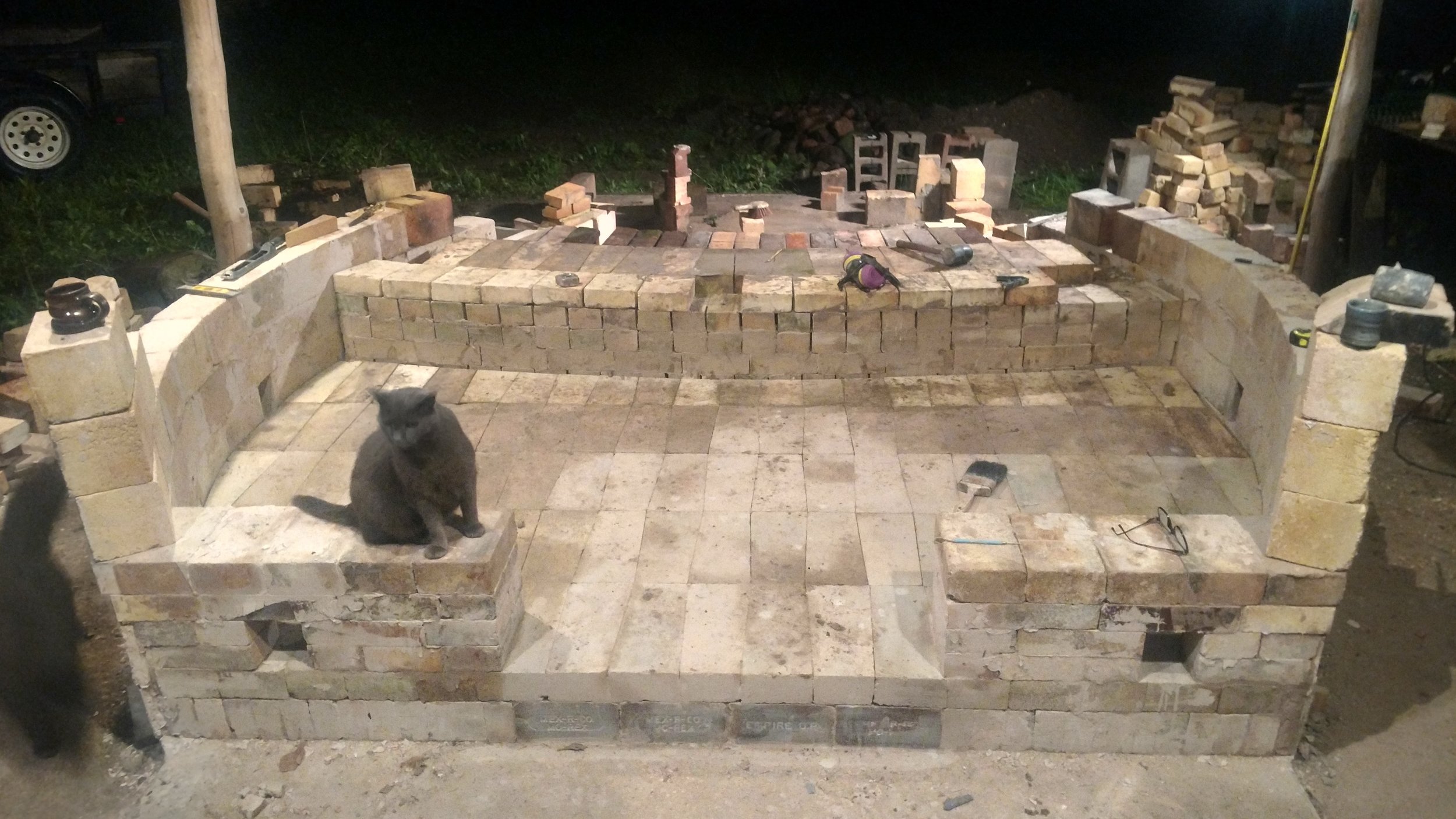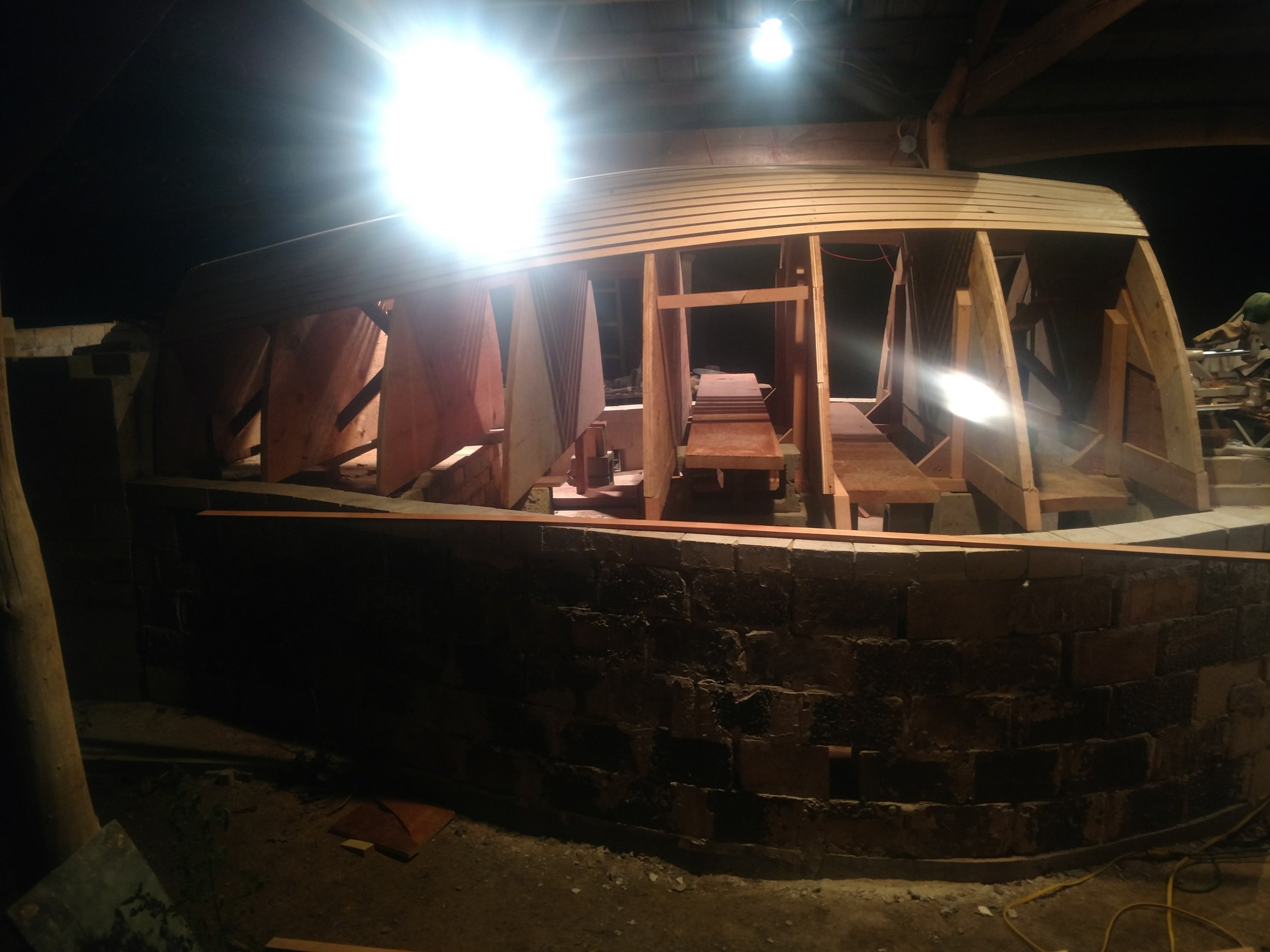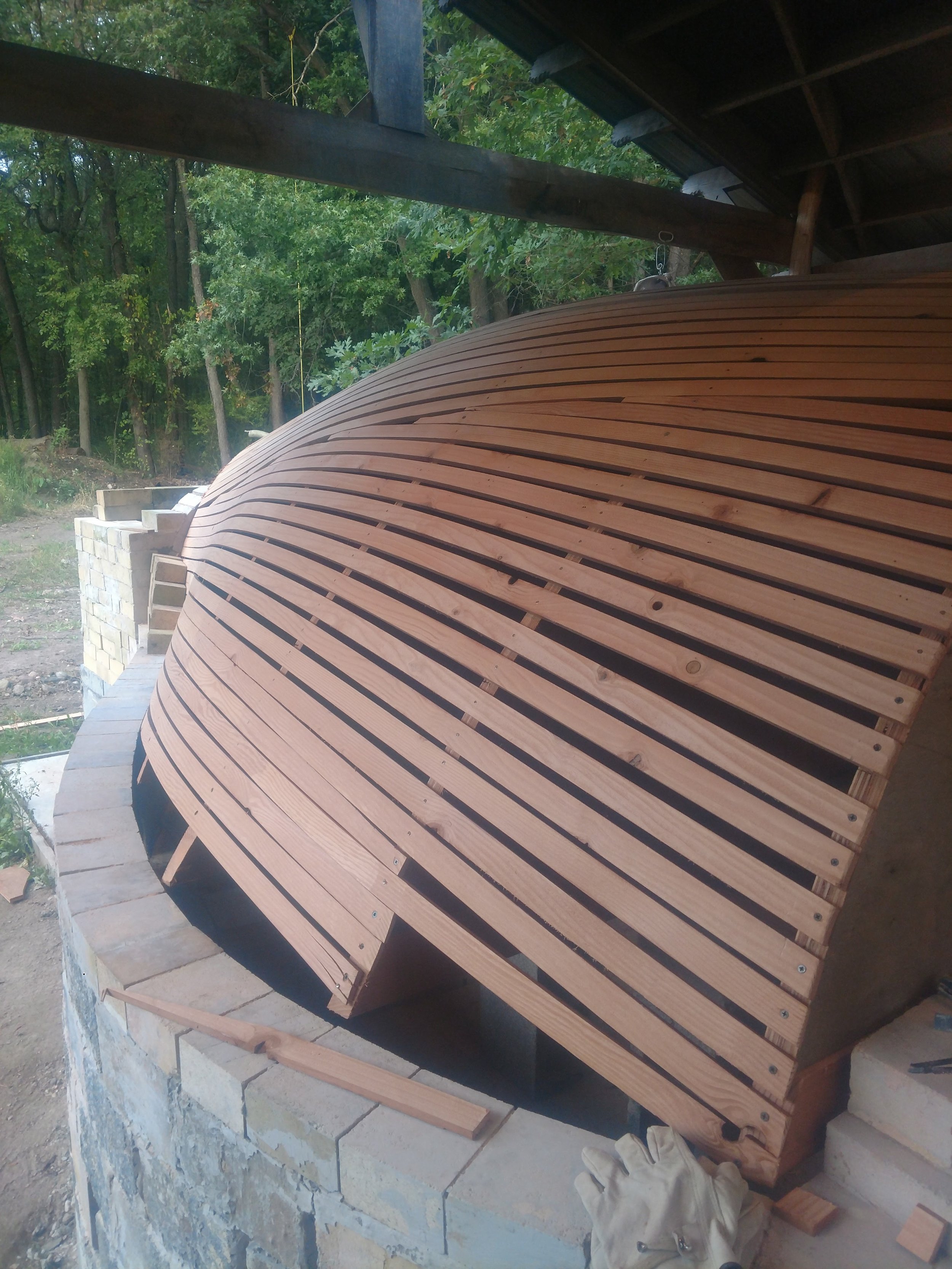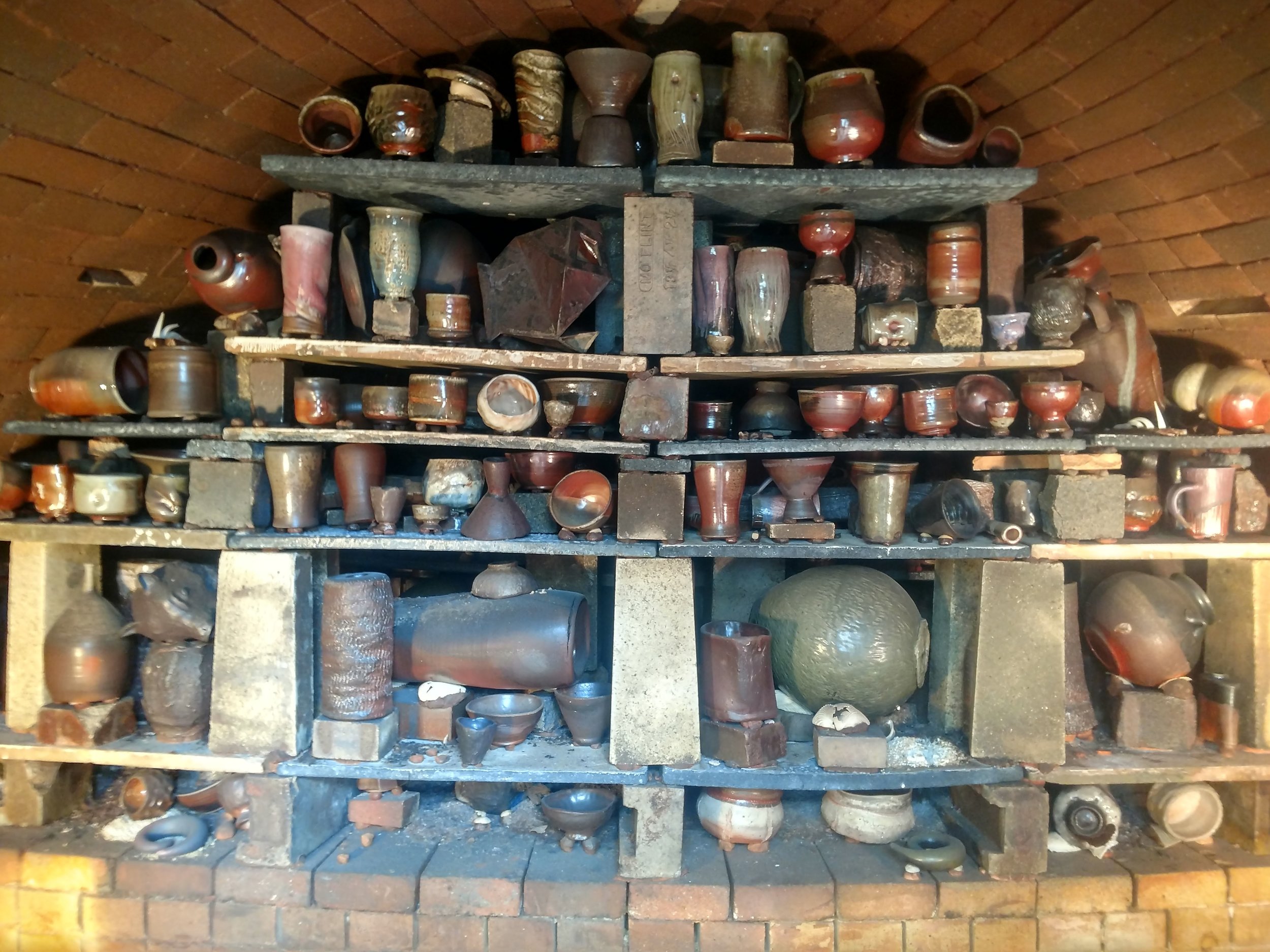NOMMO







In the spring of 2017, I fired the single chambered catenary arch kiln for what turned out to be the last time. Eight face cords of cherry, ten pounds of salt, and 58 hours into the firing I gave it up having only reached cone 8. This kiln had produced many wonderful pots in the past, but seemed to be getting more and more difficult to bring to temperature. The following week I traveled north to fire with Jeff Cline. He owns a beautiful 300 cubic foot anagama in the woods near Cross Village. After a really great six day firing we figured that we had burned something like 12 or 14 face cords of oak, maple, and beech. I came south with the thought that my catenary was a terribly inefficient kiln, and somewhat impulsively leveled it.
Turns out, in the destruction of the kiln I discovered that the chimney had been steadily getting smaller due to a construction mistake on my part which was a lack of corner interlocks for a couple of feet in the chimney. Heat. Expansion. Salt. LOCK. Repeat. Twenty firings in the chimney was down to half its original cross section, hidden from view by the insulation layer. Too late, the arch was gone.
I had, for 6 or 8 years a kiln design in my head that was based on accumulated information from firing the Kegonsa Anagama with David Smith, the Cross Village Anagama with Jeff Cline, and those two characters' inputs into firing Oya, the larger anagama at my studio. The beginning thought with this design was to discover how small an anagama could be that would still invite a huge amount of ember - pot contact, and be easy to load. The result was a very stubby, fast and bulbous shape resembling half of a turnip (Thanks Beefheart). I was lucky to have an unlimited supply of arch-tapers, again from the steel industry in my town, and a brick saw which allowed me to build a very curvaceous kiln. The new kiln is 9 feet wide, 5' 10" tall at its highest, and only 11 feet long. Much of what would be the tail of a more conventional anagama is in the chimney. A person can load pots at the double flues with barley a duck. The floor is a bit steep rising 2 and a 1/2 feet over the length of the kiln in 2 steps.
Jessie cooking a turkey.
We decided to build a bread oven into the base of the chimney for cooking when the kiln is not in use. The first use was on March 31st to cook a 26 pound turkey and lots of bread. The bird cooked for 26 hours after a quick sear and was quite excellent. When the kiln is firing, this opening serves as a generous port for higidashi.
The first firing of the NOMMO was April 30th through May 6th in the spring of 2018. During this firing I was worried that the kiln was running in oxidation as there was very little smoke in the stack. Turns out this was not the case, likely due to the fact that the damper slots were allowing air into a very hot stack to reburn gasses there. In fact it was such a reductive firing that any glazes besides shinos and oil spots were largely annihilated by the amount of carbon. The only greens were iron greens, as in a temoku with 4% iron was a rich green. And yes, the firebox pots were fairly rich considering that we burned mostly cherry. So, this is a fairly good problem to have.
The second firing will be aimed at firing the kiln as fast as possible, perhaps two days, with a bent towards the oxidation end of the scale. It will be filled with functional work for the most part ignoring the firebox potential. The third firing this coming fall will be the opposite, firing with oak for an extended period of time to explore those new fireboxes. The new kiln's name is the NOMMO (thanks Jesse) after the mysterious aquatic ancestral spirits of the Dogon people of Mali thought to have imparted special knowledge to them in the very distant past. Or the mysterious tarot card that appears in a certain Tom Robbins book.
Come visit any time! Cheers!
Ken

